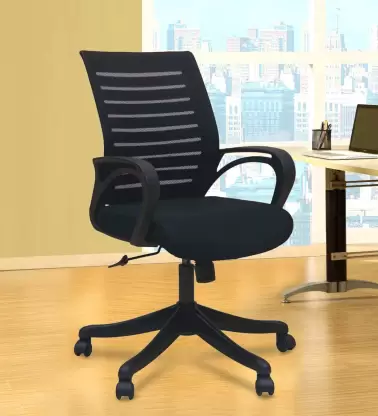Office chairs are a crucial component of your home office or professional workspace. Using the wrong office chair can lead to discomfort, fatigue, and reduced focus, which ultimately lowers your productivity. An uncomfortable office chair can also cause back and neck pain, affecting your overall health.
Choosing the right office chair can minimize the number of breaks you need to take due to discomfort. Proper lumbar and pelvic support are essential to reduce muscle strain and improve posture. If you’re planning to invest in a new office chair, this guide will help you understand what features to look for to maximize comfort and efficiency.
Types of Office Chairs
To select the perfect office chair for your workspace, it’s important to understand the different types available. The most common varieties include:
- Low Back Chair: Also known as task chairs.
- The backrest reaches the middle of your back.
- Ideal for those needing moderate lumbar support and who frequently lean forward or stand.
- Not recommended for individuals with neck, head, or upper back issues; a higher backrest would be better.
- Mid-Back Chair: Features a higher backrest than low back chairs.
- The backrest extends up to the shoulders.
- Supports the natural curve of the spine and provides comfort for shoulder blades.
- Commonly used in corporate settings for comfortable long-hour work.
- High Back Chair: Also known as executive chairs.
- Backrest supports the upper back, shoulders, and neck, often including a headrest.
- Designed for all-day comfort, especially suitable for prolonged sitting.
- Helps reduce slouching by providing full back support compared to mid and low back chairs.
- Stable or Non-Wheeled Office Chair: Often referred to as visitor chairs.
- Typically found in waiting rooms and clinics but also suitable for desk work if wheel movement is distracting.
- Provides stability but limited mobility since it doesn’t swivel or roll.
- Available in mid-back, low back, or high back styles, combining stability with various design preferences.
Things to Consider When Buying an Office Chair
When purchasing your ideal office chair, keep these key factors in mind:
- Dimensions: Ensure the chair’s height, width, and depth fit your body size comfortably to avoid strain.
- Seat Comfort: The seat should not be too soft, which can cause poor support, nor too hard, which can lead to soreness over time.
- Back Support: Select a chair that supports your spine’s natural alignment, relieving pressure from your back and neck.
- Armrest Comfort: Check that armrests are well-padded or firm to your liking and can be adjusted to suit your posture.
- Head Support: Consider a chair with a headrest if you require neck support for added comfort during long work sessions.
- Build Quality: Invest in a chair made from durable, high-quality materials to ensure longevity and stability.
Frequently Asked Questions About Office Chairs
- What is the primary use of low back chairs?
Low back chairs are designed for short-term tasks such as artwork, studying, or bill payments, providing moderate lumbar support suitable for brief usage.
- Why choose a mid-back chair?
Mid-back chairs are ideal for regular office employees, offering optimal support for long hours, making them one of the best computer chairs for extended use.
- Where are high back chairs commonly used?
High back chairs are typically found in executive offices and conference rooms, offering excellent support and mobility, facilitating better focus and comfort during long meetings.
- What situations call for a stable, non-wheeled office chair?
Stable chairs are great for children attending online classes or doing homework, as they help maintain focus by minimizing distractions caused by excessive movement.
Conclusion
Don’t underestimate the importance of a quality office chair—it’s a vital element that influences not only your productivity but also your overall health. Poor posture from an unsuitable chair can lead to chronic spinal issues and back pain. Prioritize your health by choosing a chair that promotes correct posture and supports your body effectively. Remember to take regular breaks, stand up, stretch, and walk every hour to maintain good circulation and prevent discomfort during long workdays.
For more information about Porcelain Outdoor Tiles, explore our Home improvement category.


